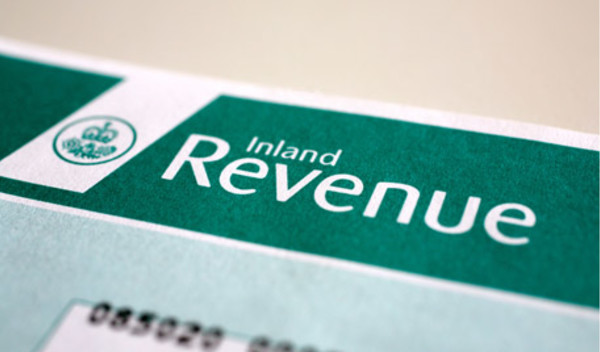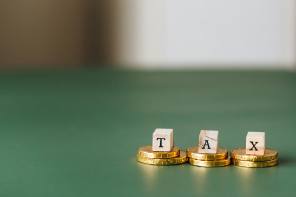

Avoidance and evasion are going to be high on the agenda of this chancellor, as Philip Hammond unveiled a string of measures to crack down on promoters of tax avoidance schemes.
In the Budget, Mr Hammond announced there will be new legislation to ensure that promoters of tax avoidance schemes - which may include financial advisers and wealth managers - cannot circumvent the promoters of tax avoidance schemes (POTAS) regime by reorganising their business.
As announced in the 2016 Autumn Statement, the government will introduce a new penalty for a person who has enabled another person or business to use a tax avoidance arrangement which is then later defeated by HM Revenue & Customs (HMRC).
According to the government documents, HMRC has so far secured approximately £140bn in additional tax revenue through tackling avoidance, evasion and non-compliance since 2019.
Among the many tax tweaks outlined in the Budget were measures put in place to attempt to create a more level playing field for the employed and self-employed, as far as national insurance contributions are concerned.
The government has already announced it will abolish Class 2 National Insurance contributions (effectively a flat-rate charge on the self-employed) from April 2018.
But it has also acknowledged the differential between the rates of NI paid by employees and those paid by the self-employed would increase.
The chancellor announced the main rate of class four NICs will increase from 9 per cent to 10 per cent in April 2018, and to 11 per cent in April 2019.
Taken into consideration with the Class two NIC abolition, this means only self-employed individuals with profits above £16,250 will have to pay more NICs.
Sue Moore, technical director at the Institute of Chartered Accountants in England and Wales, commented: "For many years various chancellors have suffered anxiety about the different tax/NI paid by the self employed vs the employed and as a nation of shop keepers there are a lot of self employed in the UK."
She believes these new measures will create a "fairer" playing field.
Other tax changes you may have missed are included in the table below.
| Tax | Changes in 2017 Budget | Changes in 2016 Autumn Statement | Changes in 2016 Budget |
| Income tax and personal allowances | Government continues with plans to increase personal allowance "by more than inflation" in 2017/2018. Personal allowance confirmed it will rise to £11,500, with a £2,000 increase to higher rate threshold. NEW: Government introduces a £3,000 reduction in the tax-free dividend allowance from £5,000 to £2,000. | Gov't pledges to meet commitment to raising income tax personal allowance to £12,500 and the higher threshold to £50,000 by end of this parliament. Once it reaches £12,500, it will rise in line with CPI. | Personal allowance to rise to £11,500 in 2017/2018. Higher rate threshold will rise by £2,000 to £45,000 in 2017/18. |
| Pension allowance | No changes to MPPA proposals to reduce it from £10,000 to £4,000. No change to the LTA. Green Paper on Social Care promised. Master Trusts will see their tax registration process amended to align with the Pension Regulator's new authorisation and supervision regime. | No changes announced to pensions allowance. However, Money Purchase Annual Allowance will be reduced to £4,000 from April 2017. From 6 April 2018, the government still intends to index the standard Lifetime Allowance annually in line with CPI. | Lifetime Isa introduced. LTA for most people is £1m in the tax year 2016-17. |
| Capital gains tax | No mention of changes to CGT, despite calls from the buy-to-let industry asking for a least a tapered reduction in CGT, on properties owned for 10+ years. | Tax advantages linked to employee shareholder status will be abolished for arrangements entered into on, or after, December 2016. | From 6 April 2016, higher rate of CGT will be reduced from 28% to 20%. The basic rate of CGT will be reduced from 18% to 10%. Entrepreneurs’ relief will be extended to long-term investors in unlisted companies. This will provide 10% rate of CGT for gains on newly issued shares in unlisted companies bought on or after 17 March 2016. |
| Bank levy | No changes | Bank levy charge will be restricted to UK balance sheet liabilities from 1 January 2021. | No changes |
| Inheritance tax | Still no movement on the £325,000 threshold for IHT | Gov't confirms that from April 2017, IHT will be charged on UK residential property when held indirectly through an offshore structure | Government will legislate to charge IHT on all UK residential property indirectly held through an offshore structure, from 6 April 2017. |
| Corporation tax | Gov't commits to a R&D tax review with the publication of an Industrial Strategy Green Paper to drive up the level of private investment in science, research and innovation. | Gov't pledges to uphold the 17 per cent cut and reduce burden of business rates by £6.7bn over next five years. | Rate of corporation tax will be cut to 17 per cent by 2020. |
| Tax on savings interest | No change - but beware the £3,000 reduction in Dividend Tax. | Isa allowance rises will be as outlined by George Osborne in his Spring Budget in 2016. Gov't is to equalise tax treatment between offshore and onshore funds. | Isa allowance to rise from £15,240 to £20,000 in April 2017. Any adult under 40 can open a new Lifetime Isa, saving up to £4,000 each year with a £1,000 government bonus. Tax rules will be changed on Oeics, authorised unit trusts, investment trusts and peer to peer loans. This means income tax deductions on interest will no longer be payable from April 2017. |
| National Insurance Contribution | Class 2 Nics abolition has been confirmed by gov't. Main rate of class 4 Nics will rise from 9 per cent to 10 per cent in April 2018, and to 11 per cent in 2019. | Proposals to end class 2 Nics | |
simoney.kyriakou@ft.com



